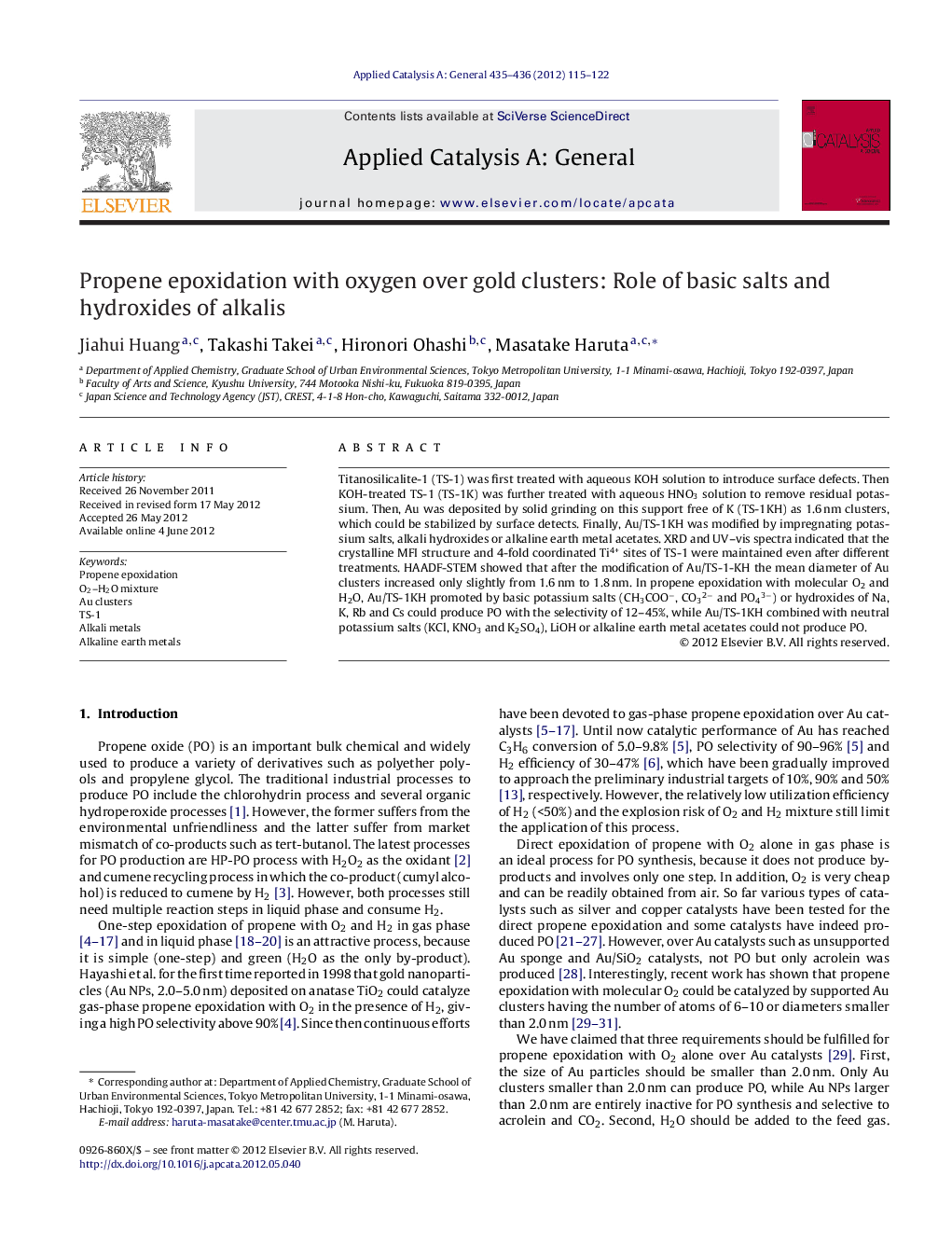| Article ID | Journal | Published Year | Pages | File Type |
|---|---|---|---|---|
| 40824 | Applied Catalysis A: General | 2012 | 8 Pages |
Titanosilicalite-1 (TS-1) was first treated with aqueous KOH solution to introduce surface defects. Then KOH-treated TS-1 (TS-1K) was further treated with aqueous HNO3 solution to remove residual potassium. Then, Au was deposited by solid grinding on this support free of K (TS-1KH) as 1.6 nm clusters, which could be stabilized by surface detects. Finally, Au/TS-1KH was modified by impregnating potassium salts, alkali hydroxides or alkaline earth metal acetates. XRD and UV–vis spectra indicated that the crystalline MFI structure and 4-fold coordinated Ti4+ sites of TS-1 were maintained even after different treatments. HAADF-STEM showed that after the modification of Au/TS-1-KH the mean diameter of Au clusters increased only slightly from 1.6 nm to 1.8 nm. In propene epoxidation with molecular O2 and H2O, Au/TS-1KH promoted by basic potassium salts (CH3COO−, CO32− and PO43−) or hydroxides of Na, K, Rb and Cs could produce PO with the selectivity of 12–45%, while Au/TS-1KH combined with neutral potassium salts (KCl, KNO3 and K2SO4), LiOH or alkaline earth metal acetates could not produce PO.
Graphical abstractFigure optionsDownload full-size imageDownload high-quality image (124 K)Download as PowerPoint slideHighlights► Gold clusters (1.6 nm) were deposited on TS-1 free of K by solid grinding. ► Different cations with counter anions were introduced on Au/TS-1 by impregnation. ► Na+, K+, Rb+, or Cs+ coordinated with OH−, CH3COO−, CO32−, or PO43− promoted propene epoxidation with O2–H2O.
